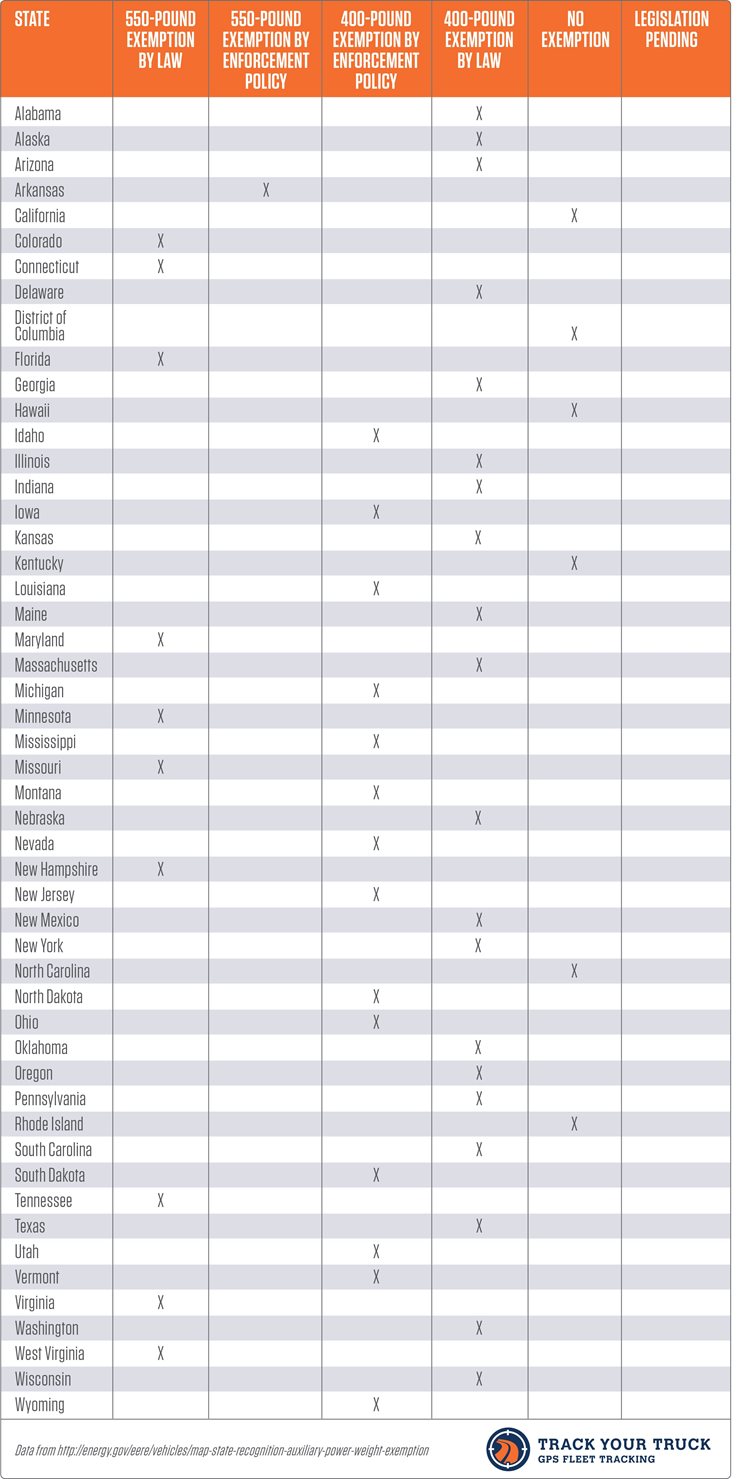APU Exemption
As professional truck drivers, there are a lot of rules and regulations to keep track of. Oftentimes, a vague description is attributed to a regulation, to make the principle easy to understand. For example, the 12,000 lb weight limit for steer axles is a good guideline, but the actual limit is a little more complicated than that.
In 2005, The Energy Policy Act increased the gross maximum weight and axle weight limit by 400 lbs. With the adoption of the heavier, but cleaner, running battery-powered APUs, this weight exemption was increased to 550 lbs in 2012. However, this exemption was not mandated, so each state could decide whether or not to allow the exemption.
Some states enforce this exemption by law, while others enforce it by “enforcement policy”. I have no idea what this means, and could not find a clear definition.
Down below is a chart, courtesy of Track Your Truck, showing which states allow the 400 lb. and 550 lb. exemptions. Please note that some states do not allow the exemption.
This exemption applies to the gross and axle weight. You can be over-gross by the allowed exemption, but your axle weights must not exceed the allowed legal weight, plus the exemption. This applies to axle weights, not combined drive, or tandem weights. For example, your tandems can be 34,400, lbs. with the 400 lb. exemption. Most states allow 20,000 lbs. per axle, so the heaviest either of those axles can be is 20,400 lbs. Clear as mud, right?
I opened with the 12,000 lb. steer axle example. Most states allow more than that, but you can’t exceed your tire and axle ratings. Your tire rating can be found on the sidewall of your tire, while the axle rating is on a sticker usually located inside of your door. This is where knowing the states you’re running through, and their laws, is important. Always run legal to the strictest state you’ll be driving through.
Now, let’s add more confusion. To be eligible for this exemption you have to meet a few requirements. As the operator, you must be able to prove the following:
- The Weight of the APU by written certificate. This should be in your truck at all times.
- That it’s functioning, by demonstration or certificate
- Certification of the APU’s weight.
That last one adds to the confusion. If your certificate states your APU weighs 350 lbs., your exemption is only for 350 lbs., not the 400 or 550 lb. exemption. The regulation is for the lesser of the 2 weights, exemption weight, or APU weight.
So, to summarize:
- Know the weight of your APU. This will be on the certificate you must carry in your truck
- The exemption is for the lesser of the 2 weights, actual APU weight, or exemption weight
- The exemption applies to gross and axle weight
- Not all states allow the exemption. Always drive legal to the most strict state you will be driving through.
- Lastly, keep up on the exemptions. States may change their regulations at any time.
